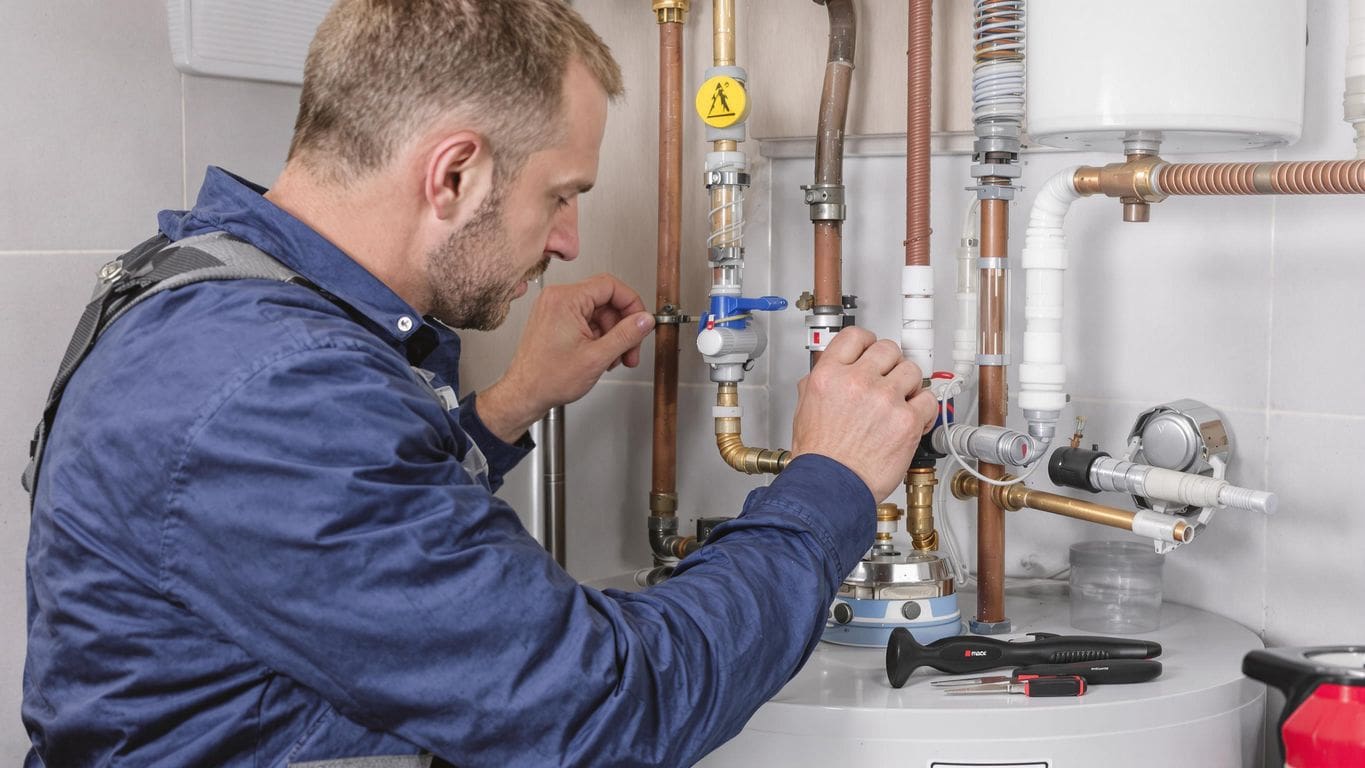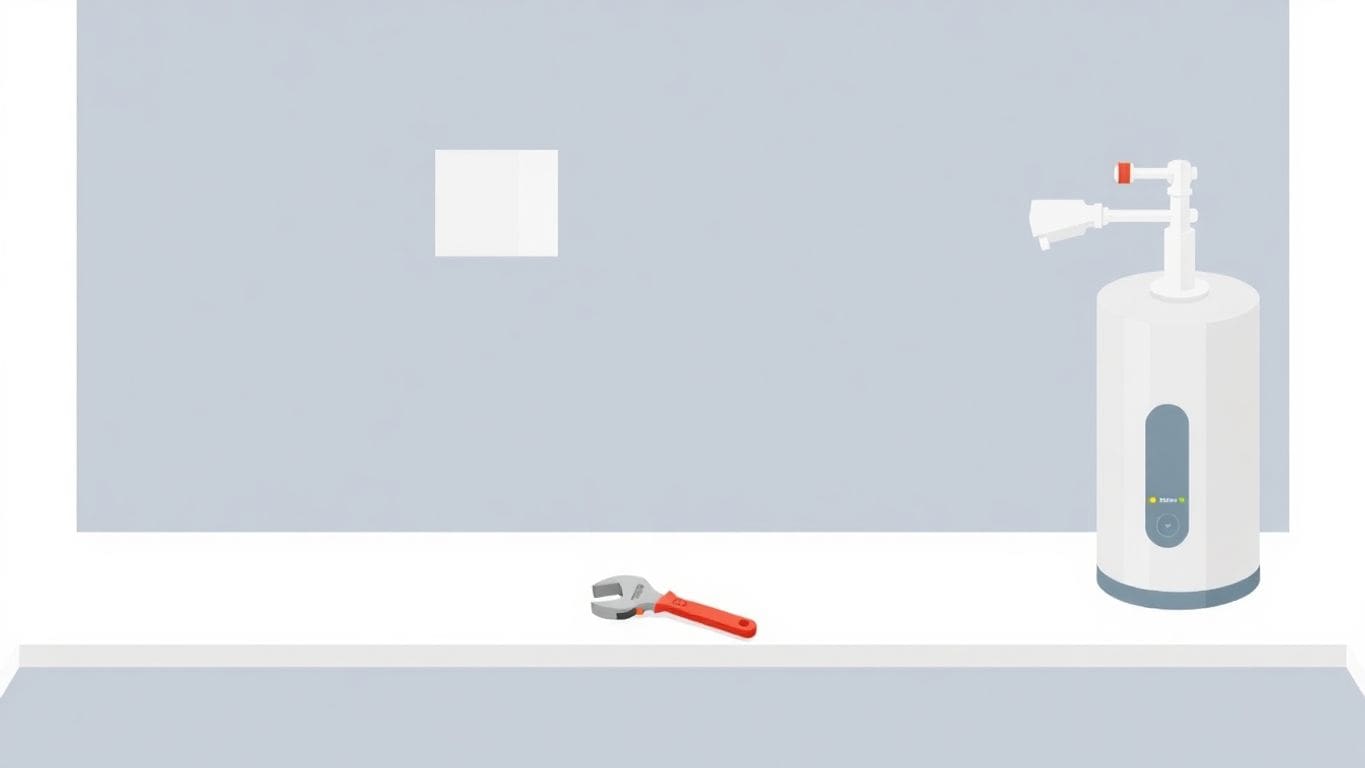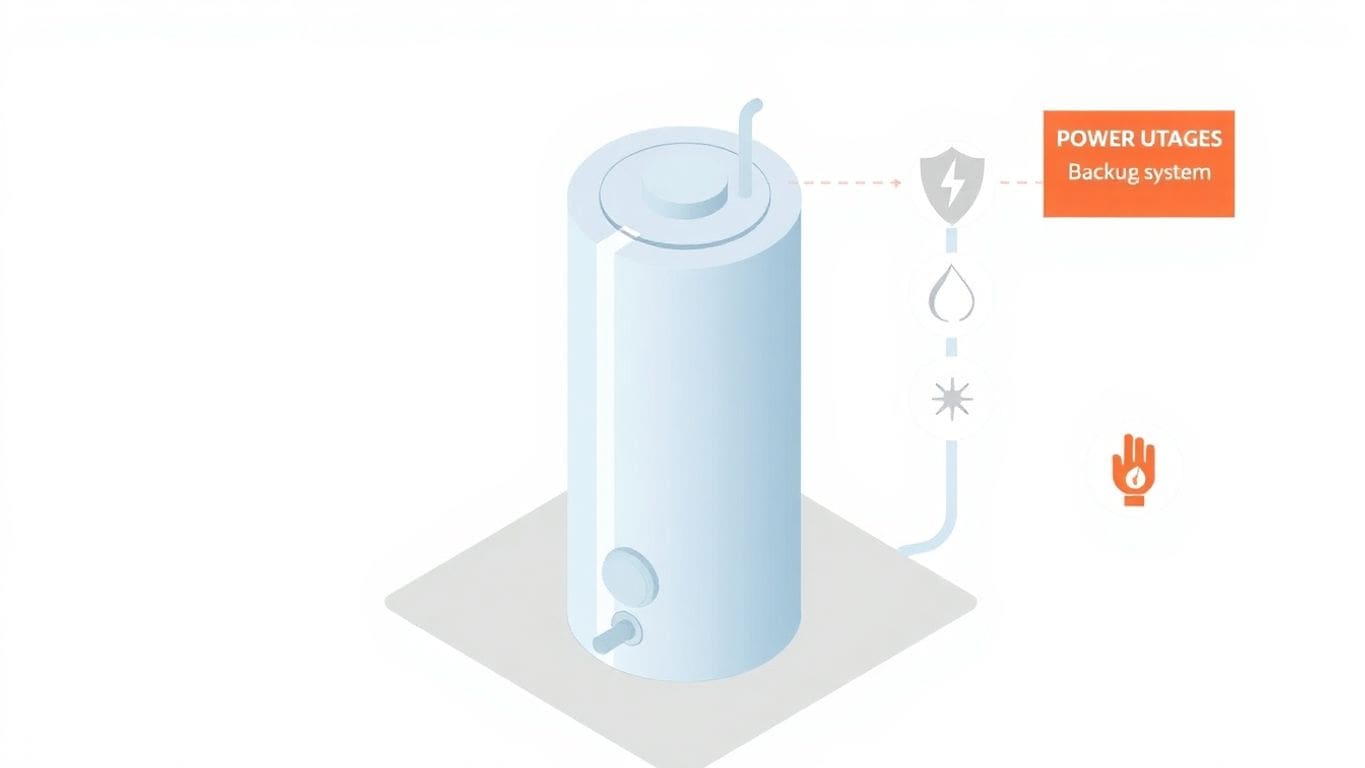
If you’ve found yourself asking, ‘why has my water heater stopped working?’, you’re not alone. Water heaters are essential for our daily routines, providing hot water for showers, washing dishes, and laundry. When they malfunction, it can throw a wrench in your day. Fortunately, there are several common issues that might be causing the problem, and many of them can be fixed with a bit of troubleshooting. This article will explore the typical reasons behind water heater failures and how to address them effectively.
Your water heater is a workhorse, but sometimes it quits. Let’s look at some common reasons why your water heater might fail. Knowing these can help you figure out what’s going on and what to do next.
One of the most frequent reasons for water heater trouble is leaks. Check around your water heater for any signs of water. Leaks can come from a few different spots:
If you spot a leak, it’s important to act fast. Turn off the water supply to the heater to minimize damage. Then, call a plumber. Don’t try to fix a leaking tank yourself.
If you have a gas water heater, a gas leak is a serious concern. If you smell gas, leave immediately and call your gas company. Don’t try to find the leak yourself. It’s also possible that the gas valve itself is broken. This valve controls the gas flow to the burner. If it’s not working right, your water won’t heat up.
Electric water heaters use heating elements to warm the water. Over time, these elements can burn out. If one element fails, you might still get some hot water, but not as much or as quickly as before. If both elements go out, you’ll have no hot water at all. Replacing a heating element is a pretty easy fix, but you need to be careful when working with electricity.
It’s good to know the parts of your water heater. This helps you understand what might be going wrong. Let’s look at some key parts.
The thermostat controls the water temperature. If your water is too hot or too cold, the thermostat might be the problem. Sometimes, the thermostat just needs to be adjusted. Other times, it might need to be replaced. A faulty thermostat can cause inconsistent water temperatures.
The Temperature Pressure Relief (TPR) valve is a safety feature. It releases pressure if the water gets too hot or the pressure gets too high. If you see water leaking from the TPR valve, it could mean there’s a problem with the temperature or pressure inside the tank. You might need to call a professional to check it out. It’s important to make sure this valve is working right to prevent accidents. You can test the pressure relief valve by lifting the lever and seeing if water flows out, then stops when you release it.
Electric water heaters use heating elements to heat the water. Over time, these elements can burn out. If one element fails, your water might not get as hot as it used to. Replacing a heating element is a pretty easy fix, but you need to be careful when working with electricity. Here are some signs of a bad heating element:
Understanding these components can help you diagnose problems. If you’re not comfortable working on your water heater, it’s always best to call a professional. They can safely and correctly fix any issues.
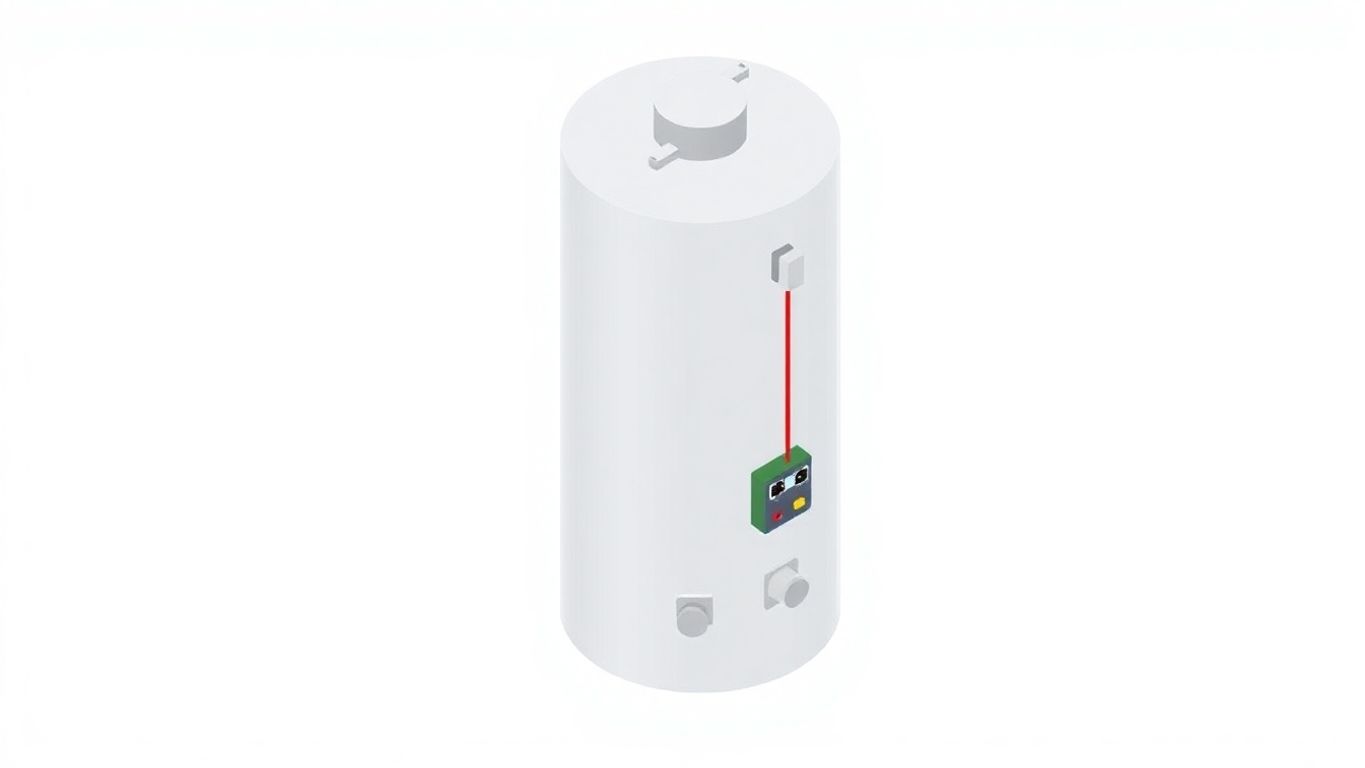
If your water heater isn’t working, and it’s electric, the problem might be electrical. Don’t worry, we’ll walk through some common issues.
This is often the easiest thing to check. Your water heater has its own circuit breaker in your electrical panel. Go to your panel and look for the breaker labeled "water heater." If it’s in the "off" or middle position, it has tripped.
To reset it, flip the breaker all the way to the "off" position and then back to the "on" position. If it trips again right away, there’s a bigger problem, and you should call a professional.
If the circuit breaker isn’t the issue, the problem might be with the power supply itself. This means checking the wiring and the power cord (if your heater has one).
If you’re comfortable using a multimeter, you can test the voltage at the outlet to make sure it’s getting the correct power. But if you’re not sure how to do this, it’s best to call an electrician.
Sometimes, the wires connected to your water heater can become loose or corroded. This can prevent the heater from getting the power it needs.
If you have a gas water heater, problems with the gas supply can stop it from working. Let’s look at some common gas supply issues you might face.
If your water heater has a pilot light, it needs to be lit to heat the water. A pilot light that keeps going out is a common problem. Here’s what might be happening:
Try relighting the pilot light. If it goes out again quickly, there’s likely a bigger problem.
The thermocouple is a safety device. It’s a small sensor that keeps the gas valve open when the pilot light is lit. If the pilot light goes out, the thermocouple is supposed to shut off the gas to prevent leaks. But sometimes, the thermocouple itself fails. If it does, it won’t keep the gas valve open, and the pilot light will keep going out. You might need to replace the thermocouple.
The gas valve controls the flow of gas to the water heater. If the valve isn’t working right, it might not let enough gas through, or it might shut off the gas completely. Here are some things to check:
If you smell gas, leave the area immediately and call your gas company. Gas leaks are dangerous and need to be handled by professionals. Do not try to fix a gas leak yourself.
Corrosion is a big problem for water heaters. It can cause leaks and make your water dirty. Knowing the signs of corrosion can help you fix the problem before it gets worse. Let’s look at some common signs.
If your water looks rusty or has a red or brown color, that’s a sign of corrosion. Rust from the inside of your water heater is mixing with the water. This usually means the tank is starting to rust. It’s not safe to drink rusty water, and it can also stain your clothes and fixtures.
Check the outside of your water heater tank for rust. Look closely at the bottom and around any connections. If you see rust, it means the tank is corroding. A corroded tank can leak or even burst, causing water damage to your home.
Leaking around the pipes and connections to your water heater can also be a sign of corrosion. The connections can rust and weaken over time, causing them to leak. If you see any water around the connections, check them closely for rust or damage.
Corrosion can be a silent killer for water heaters. Regular checks can help you catch it early and prevent bigger problems. Ignoring these signs can lead to costly repairs or even the need to replace your entire water heater.
Here’s a simple table to help you remember the signs:
| Sign | What to Look For |
|---|---|
| Rusty Water | Red or brown color in your hot water |
| Corroded Tank | Rust on the outside of the tank |
| Leaking | Water around pipes or the base of the heater |
Over time, sediment can build up in your water heater. This sediment is usually minerals that come from your water supply. Too much sediment can cause problems, so it’s good to check for it.
Sediment buildup can cause a few different issues:
Flushing your water heater tank can help get rid of sediment. Here’s how you do it:
To keep sediment from building up, you should flush your water heater at least once a year. Regular flushing can extend the life of your water heater and keep it running efficiently. If you have hard water, you might need to flush it more often. Also, consider having a water softener installed to reduce mineral content in your water supply.
Doing this simple task can save you money and trouble in the long run. It’s like giving your water heater a regular checkup to keep it healthy.
Is your water too hot or not hot enough? It might be a simple fix! Let’s check your water heater’s temperature settings.
Your water heater has a thermostat that controls the water temperature. If the thermostat isn’t set right, your water might not be the temperature you want. Most water heaters are set to 120°F (49°C) at the factory. This is usually a good temperature to prevent scalding, but you can adjust it if you need to.
To check the thermostat:
Water heaters have a high-temperature cutoff switch. This switch turns off the heater if the water gets too hot. It’s a safety feature to prevent the water from getting hot enough to cause burns or damage the tank. If your water heater keeps shutting off, the high-temperature cutoff switch might be the problem. You may need to reset it. Look for a reset button, usually red, near the thermostat.
Finding the right water temperature is important for both comfort and safety. If your water is too cold, you’ll have to wait longer for it to heat up. If it’s too hot, you could get burned. Here’s how to adjust the temperature:
It’s a good idea to check your water temperature regularly, especially if you have kids or elderly people in your home. This helps prevent accidents and keeps everyone safe.
It’s a good idea to check the valves and connections on your water heater regularly. This can help you catch small problems before they become big headaches. Let’s look at some things to check.
The pressure relief valve is a safety feature. It’s designed to release pressure if it gets too high inside the tank. You should check this valve to make sure it’s working right.
To test it, carefully lift the lever on the valve. Hot water should come out of the drainpipe. If nothing comes out, or if it leaks after you release the lever, the valve might need to be replaced. It’s important to handle this test with care to avoid burns.
The drain valve is at the bottom of the tank. It’s used to drain the tank for cleaning or repairs. Check this valve for leaks. If it’s leaking, try tightening it. If that doesn’t work, you might need to replace the valve.
Look at all the pipes connected to your water heater. Check for any signs of leaks or corrosion. Even small drips can cause problems over time. Tighten any loose connections with a wrench. If the pipes are corroded, you might need to replace them. It’s a good idea to call a plumber if you’re not comfortable doing this yourself.
Keeping an eye on your water heater’s valves and connections can save you from bigger problems down the road. Regular checks can help you spot leaks or corrosion early, so you can fix them before they cause major damage.
Sometimes, fixing a water heater is more than a DIY job. You might need to call in a pro. It’s better to be safe than sorry, especially when dealing with gas, electricity, or water.
Some problems are too big to handle on your own. If you see any of these, it’s time to call a professional:
Your safety is the most important thing. Don’t try to fix something if you’re not sure what you’re doing. Here are some times when it’s best to call a pro for safety:
Working with water heaters can be risky. Gas leaks can cause explosions, and electrical problems can cause shocks. If you’re not careful, you could get hurt or damage your home.
Finding the right person for the job is key. Here’s how to find a good technician:
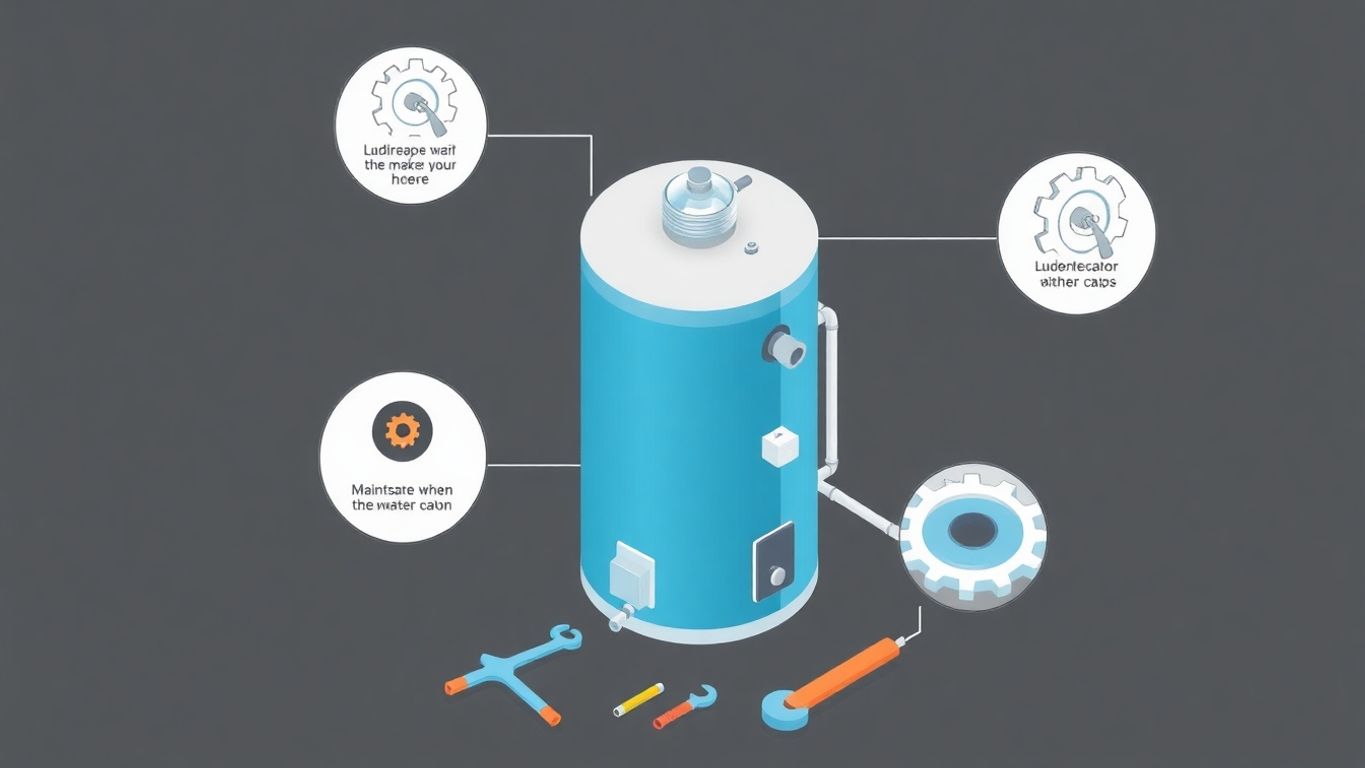
Taking care of your water heater can help it last longer and work better. It’s like taking your car in for an oil change – a little effort now can save you big headaches later. Here’s what you should do:
Check your water heater every few months. Look for any signs of leaks, rust, or damage. Make sure the area around the heater is clear and dry. If you see something that doesn’t look right, it’s best to get it checked out sooner rather than later.
Sediment can build up in the bottom of your water heater tank over time. This sediment can make your heater less efficient and even damage it. Flushing the tank once a year helps remove this sediment and keeps your heater running smoothly. Here’s how:
The anode rod is a metal rod inside your water heater that helps prevent corrosion. It’s like a sacrificial lamb – it corrodes instead of your tank. You should check the anode rod every few years and replace it if it’s corroded. This can significantly extend the life of your water heater. It’s a bit tricky to do yourself, so you might want to call a plumber for this one.
Doing these simple things can really help keep your water heater in good shape. It’s all about preventing problems before they start. A little maintenance goes a long way!
So, your water heater is on the fritz. Before you panic, let’s talk about warranties and repair options. It’s good to know what your options are before you spend money.
Most water heaters come with a warranty from the manufacturer. This warranty is a promise to fix or replace the water heater if something goes wrong within a certain time. Read the warranty carefully. It will tell you what’s covered, how long it lasts, and what you need to do to make a claim. Usually, you’ll need your original purchase receipt and the model/serial number of the water heater. The warranty might cover parts, labor, or both. Some warranties are void if you didn’t install the water heater correctly or if you didn’t do regular maintenance.
Sometimes, a repair is all you need. Other times, it’s better to replace the whole unit. Here’s how to decide:
I had a water heater that was about 12 years old. The repair guy said it would cost almost as much to fix it as to replace it. Plus, he said the new ones are way more efficient. So, I went with a new one, and my gas bill went down! It was a good decision.
The cost of water heater repair or replacement can vary a lot. Here are some things that affect the price:
It’s a good idea to get several quotes from different plumbers before making a decision. Ask for a detailed breakdown of the costs so you know exactly what you’re paying for.
Start by checking the power supply or gas supply. If you have an electric heater, see if the circuit breaker has tripped. If it’s gas, make sure the gas valve is open.
Look for water pooling around the base of the heater or damp spots on the floor. You might also notice rust or corrosion on the tank.
Rusty water usually means there is corrosion inside the water heater tank. This could be a sign that the tank is failing and may need to be replaced.
It’s a good idea to flush your water heater at least once a year to remove sediment buildup and keep it running efficiently.
A thermostat controls the temperature of the water in your heater. If it’s not working right, you might not get hot water.
If the pilot light goes out, follow the manufacturer’s instructions to relight it. If it keeps going out, there might be a problem with the thermocouple.
Regularly flushing the tank and keeping the temperature at a moderate level can help prevent sediment from building up.
If you notice gas leaks, persistent leaks, or if you’re uncomfortable troubleshooting the heater, it’s best to call a qualified technician.

